The concept of “citizenship” has become the subject of renewed interest and attention. After a relative decline in the use of the term in the second half of the twentieth century, citizenship is now more discussed than ever before. Yet while the designation of “citizen” can be traced back millennia in human history, it has a multiplicity of manifestations and interpretations that elude singular definition.
In European tradition, citizenship is commonly said to originate in the ancient Greek polis (link), city-states such as Athens and Sparta. These city-states created hierarchical social systems dominated by a small group that had the leisure to be involved in government affairs. Citizen was a status given to the few: wealthy, native-born men. In the Roman era, citizenship expanded further to encompass the free people who lived within the boundaries of the empire. The forms of citizenship practiced in antiquity subsequently had a profound influence (link) on the way that citizenship was institutionalized in states and nations in the following two thousand years. During the Renaissance, classical texts like Plato’s Republic and Cicero’s writing on politics and citizenship were rediscovered. They influenced visions and theories of the role of citizens in a political body. In societies such as the United States and the French Republic, which were (literally) revolutionary, the way that citizenship was constructed as a set of individual democratic rights stems from certain Greek and Roman ideals and practices.
There has been no historiographic consensus (link) regarding the meaning of citizenship across time and space; it is clear that societies outside of the Greco-Roman tradition also developed complex views and systems of membership to communal and political entities. For example, in Chinese history, the state was composed of a ruler, mediating officials, and subjects (link) (or min, people in a political community), in reciprocity with one another. This schema allowed for determinations of who was and was not included in Chinese society by virtue of the interrelationships of these three groups; for example, those not subject to a ruler would not be considered part of the state. For many pre-Columbian Native Americans, tribal belonging was based on complex kinship ties (link). In the Middle East under the Ottoman Empire (link) of the nineteenth century, the closest analog to citizenship was the designation of being a subject of the empire as a multiethnic political jurisdiction (which became complicated for immigrants and those who intermarried with non-Ottoman subjects).
The smattering of cases presented above make plain that citizenship itself is far from a monolith; it has variously involved considerations of status, relationships to rulers, wealth, place, rights, kinship, interactions with other states, and various combinations thereof. Unfortunately, these designations have also been used at various times to exclude particular classes of people from being designated citizens, based on race, gender, immigration status, and other traits.
How, then, when citizenship itself is so fraught and nuanced a term, has discussion or invocation of “global citizenship” become so prominent in the educational landscape today? What does global citizenship mean? Can the idea aid in building a vision of citizenship that is at once inclusive, widely applicable, and productive?
Of course, this is a tall order. Moreover, these questions carry special weight at a time when international interdependence is at an all time high. Today, events that may appear to be geographically distant are often of immense local consequence. When civil war broke out in Syria, a humanitarian refugee crisis tested the limits of other nations to accept migrants. The emergence of the COVID-19 pandemic in Wuhan, China, quickly spread across the Earth through efficient travel networks. Carbon emissions created in large part by the world’s most developed nations will in all likelihood erase some island nations from the map in the coming decades unless drastic action is taken.
Undoubtedly, more crises will erupt. Education in global citizenship is one tool that can help humanity meet these challenges by emphasizing shared responsibility to create solutions.
Similarly to citizenship itself, global citizenship has not been universally defined and adopted; it covers wide ground and is the subject of debate and disagreement. However, a meta-review (link) of global citizenship identified several features that visions of global citizenship have in common:
It is a mode of thinking that connects the worldwide to the local;
It incorporates self-awareness and awareness of others, including ones who differ manifestly from those in one’s daily surroundings;
It is a practice that entails both empathy and knowledge of other cultures;
It cultivates ethical decision-making; and
It is actively participatory.
At the heart of global citizenship is a conviction that humans are capable of learning how to think and can as well choose to act mindfully in relation to the worldwide community. Global citizenship acknowledges interconnectedness, calls for intercultural sensitivities that bridge differences, and ultimately requires actions that are ethically-oriented. Using The Good Project’s rings of responsibility (link), global citizenship entails a sense of responsibility that extends to the outermost possible ring of international society and transcends borders and identity groups.
Thus, even though there are many versions of global citizenship in existence, and global citizenship education has been the subject of robust criticisms (for being neoliberal and inherently Eurocentric in nature in particular), the framework nonetheless holds promise. Whereas old views of citizenship, rooted in regional policies or traditions, were fragmented, inconsistent, and frequently exclusionary, global citizenship has the potential to unite and drive productive effort through connection and problem-solving.
Due to its significance and potential, frameworks of global citizenship have unsurprisingly been taken up in large numbers by educational institutions and international organizations. The adoption reflects wide-ranging support. For instance, national curricula in Canada, China, the United States, and several European countries now include global citizenship-related competencies. UNESCO has committed (link) to educational programs that foreground “global, not local issues” and that encourage learners “to become active promoters of more peaceful, tolerant, inclusive, secure and sustainable societies.” The United Nations Sustainable Development Goals (SDGs) adopted in 2015 present a set of priorities, such as poverty relief, amelioration of climate change, and preservation of biodiversity, that have the potential to focus and direct efforts in global citizenship education (link) for the period ahead. The OECD has also included on its international PISA tests a measure of global competence (link) , a related construct.
In recent years, The Good Project has collaborated with programs that prioritize forms of global citizenship education. Two examples indicate what global citizenship education can look like in practice.
The Global Citizens Initiative, a program that gathers a select group of students from around the world for over a week and introduces them to ideas including “good work,” entrepreneurship, and design thinking. The hope is that graduates will design projects that solve real-life issues in their home communities and beyond.
The United World Colleges movement, a network of 18 schools around the world. Gathering a deliberately diverse international cohort of students at each site, UWC has a mission for peace and a sustainable future. The first school was founded in post-World War II Europe by notable German-born educator Kurt Hahn, with a goal of fostering greater intercultural understanding at a time when international tensions were heightened.
In seeking to foster intercultural understanding, both programs draw on psychologist Gordon Allport’s intergroup contact theory (link) , which has now been supported by many subsequent studies, The theory asserts that prejudices between groups will be reduced through contact situations, especially in conditions of equal status, intergroup cooperation, common goals, and support by social and institutional authorities.
To be sure, while not every educational experience can involve intergroup contact, the approach is one promising way to further the development of skills and mindsets related to global citizenship. Others include participatory service learning or virtual reality games that encourages meta-cognition and problem-solving.
As international interdependence deepens, the human population continues to grow, and environmental, political, and social challenges abound, global citizenship as an idea and an educational imperative can help prepare students to engage productively with others and the world. By its nature, national citizenship alone is limited in scope. In contrast, global citizenship can invigorate action in directions with wide benefits for all, in accordance with goals such as the UN SDGs, peaceful co-existence, and international collaboration. These are worthwhile goals, the absence of which have been at the root of human conflicts throughout history.
Naming these goals helps to explain why global citizenship and global citizenship education is so important: without the ability to understand one another and do work for mutual benefit, the greatest problems facing humanity may overwhelm us. The promise of global citizenship is to create collaborative solutions for future success and prosperity for all. But whether global citizenship necessarily grows out of local citizenship—or remains in some sense in conflict with it—remains to be determined.






